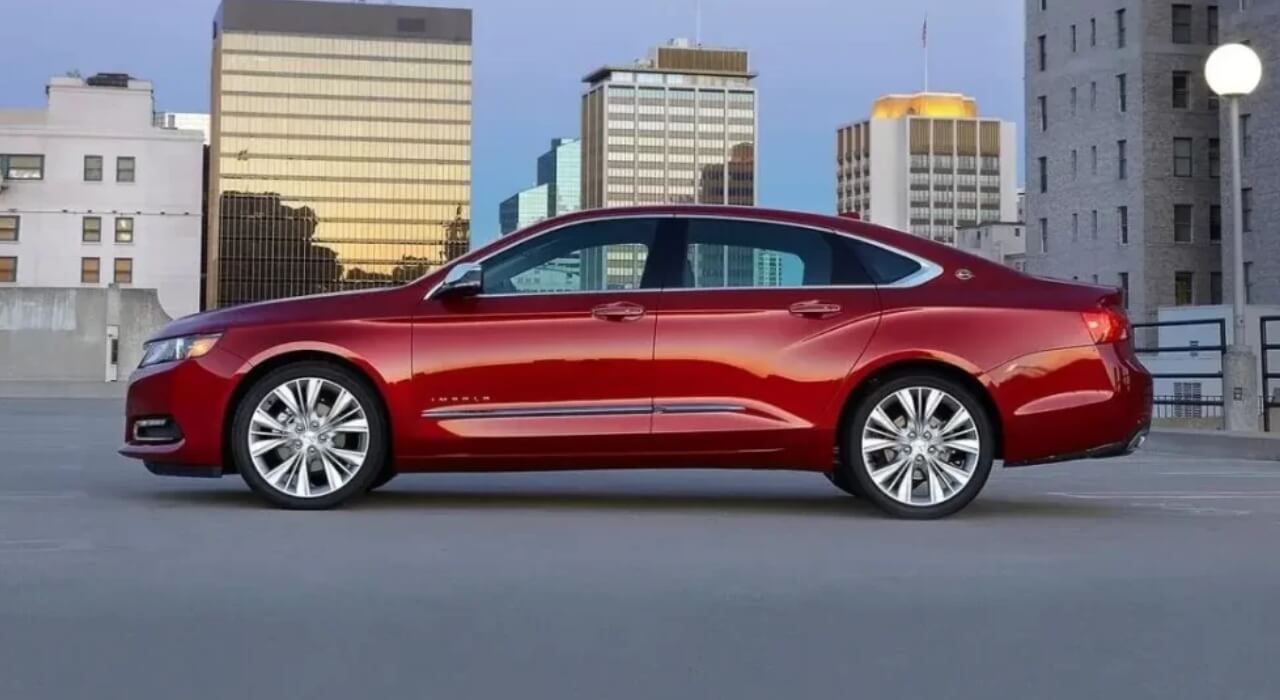The American automobile industry boasts a rich and enduring history, with the Ford Motor Company occupying a central role in this captivating narrative. Founded by Henry Ford, this company played an instrumental role in revolutionizing transportation and sculpting the modern world as we know it.
In this extensive article, we embark on a deep exploration of Ford’s history, from its humble beginnings to its transformation into a global automotive powerhouse, highlighting the pivotal milestones and innovations that have marked its journey.
Henry Ford’s Vision
The inception of the Ford Motor Company can be traced back to the late 19th century, with a young, ingenious engineer named Henry Ford at the helm. In 1896, Ford created his first self-propelled vehicle, the Quadricycle. This primitive car was powered by a small gasoline engine and featured four bicycle wheels. Despite its simplicity, this experiment marked the commencement of Ford’s lifelong commitment to automotive innovation.
The Founding of the Ford Motor Company
In 1903, Henry Ford, along with a consortium of investors, took the monumental step of founding the Ford Motor Company. The company’s initial manufacturing facility was situated in Detroit, Michigan, a location that would soon become synonymous with American automobile production. This marked the formal inauguration of Ford’s journey as a pioneer in the American automobile industry.
The Model T – A Car for the Masses
One of the most transformative and celebrated chapters in Ford’s history unfolded in 1908 with the introduction of the Model T. Affectionately known as the “Tin Lizzie,” this pioneering vehicle was designed to be accessible to the average American. The Model T’s straightforward design, combined with Ford’s revolutionary assembly line production techniques, made it the first car that countless middle-class families could aspire to own.
Suggestion: 7 Most Comfortable Car Seats For Long Trips – Full Review To Buy Online
The Assembly Line Revolution
Ford’s introduction of the assembly line in 1913 forever changed the landscape of manufacturing, not just within the automotive industry but also in other sectors. This innovative production method streamlined the mass production of the Model T, reducing the time required to assemble a car from an arduous 12 hours to a mere 93 minutes.
The implications were profound – not only did it enhance production efficiency, but it also drastically reduced manufacturing costs, thereby democratizing the automobile for a broader audience.
The Global Reach of Ford
Ford’s influence was not confined to American shores. In 1904, the company established its first international branch in Canada. As Ford expanded its footprint across the globe, it set up subsidiaries in the United Kingdom, Australia, and various other countries. This globalization of Ford marked the genesis of the American automobile industry’s far-reaching impact on a global scale.
A Shift in Leadership – Henry Ford and His Legacy
Henry Ford’s leadership style, while visionary, was not without its quirks. His unwavering dedication to the Model T and his resistance to change eventually resulted in a decline in Ford’s market share. However, it’s important to acknowledge that despite Ford’s idiosyncrasies, his legacy and contributions to the industry were undeniably profound.
Also Check: 9 Amazing Long Distance Driving Tips For a Safe And Enjoyable Trip
The Post-Model T Era – The Arrival of the Model A
In 1927, Ford concluded production of the Model T, effectively marking the end of an epoch. Nevertheless, the company swiftly rebounded with the introduction of the Model A in 1928. This new vehicle was equipped with contemporary amenities and design elements, making it a favorite among consumers of the era.
Surviving the Great Depression
The Great Depression of the 1930s proved to be an arduous period for the entire automotive industry. In the face of widespread economic turmoil, Ford displayed remarkable resilience, weathering the crisis more successfully than many of its competitors. This resilience was a testament to the company’s strong foundation and enduring commitment to innovation.
Innovations and Milestones – The 1930s and Beyond
Ford’s commitment to innovation endured throughout the 20th century. In 1932, they unveiled the first mass-produced V8 engine, setting a new standard for power and performance in affordable cars. Additionally, Ford was a pioneer in the development of trucks and agricultural vehicles, which played a pivotal role in American agriculture during the first half of the 20th century.
World War II – A Shift in Focus
World War II brought about a momentous shift in Ford’s focus. The company redirected its efforts to support the war by manufacturing military vehicles, tanks, and aircraft components. This wartime production not only contributed to the Allied victory but also left an indelible mark on Ford’s manufacturing capabilities, showcasing its adaptability in the face of global challenges.
Also Check: 7 Best Carburetors for 350 Chevy in 2023 – 2 Barrel, 4 Barrel
Post-War Boom – The 1940s and 1950s
Following World War II, Ford, much like many American corporations, experienced a post-war economic boom. The demand for automobiles was higher than ever, and Ford was ideally positioned to meet this demand. The company unveiled several iconic models during this period, including the Ford F-Series, which would eventually become one of the best-selling vehicles of all time.
The 1960s – An Era of Change
The 1960s marked a period of profound social and cultural transformation in the United States, and Ford’s lineup of vehicles mirrored these changes. The introduction of the Ford Mustang in 1964 ushered in a new era of sports cars. The Mustang’s stylish and affordable design captured the imagination of a new generation of drivers, becoming a symbol of the muscle car era.
Safety and Environmental Concerns – The 1970s
The 1970s brought heightened awareness of safety and environmental issues. In response, Ford incorporated safety features like airbags and improved seatbelts into their vehicles. Additionally, they began developing more fuel-efficient cars to address concerns about energy conservation and pollution, showcasing the company’s commitment to the well-being of both its customers and the environment.
The 1980s and 1990s – Innovation and Expansion
During the 1980s and 1990s, Ford continued to innovate and diversify its product lineup. The introduction of the Ford Taurus, a mid-size sedan featuring a sleek and aerodynamic design, highlighted the company’s dedication to modernization. The Taurus went on to become a best-seller, setting new standards in design and engineering.
Suggestion: Top 9 SUVs With Best Gas Mileage – Top Performing SUVs
A New Millennium – Challenges and Innovations
As the 21st century dawned, Ford encountered its share of challenges. Economic downturns and intensified competition from foreign automakers necessitated a reevaluation of the company’s strategy. Ford responded by investing in the development of hybrid and electric vehicles, signaling a commitment to environmental sustainability while addressing the changing landscape of the automotive industry.
The Great Recession – A Test of Resilience
The global financial crisis of 2008 posed a significant challenge to Ford, as it did to many other businesses. However, unlike some of its competitors, Ford chose not to seek a government bailout. Instead, the company undertook a profound restructuring of its operations, focusing on efficiency and productivity, enabling it to not only endure the storm but emerge stronger on the other side.
The Rebirth of the Ford Mustang
In 2015, Ford celebrated the 50th anniversary of the Mustang with the introduction of a completely redesigned version of the iconic sports car. The new Mustang paid homage to the original while incorporating modern technology and performance enhancements. This enduring popularity of the Mustang underscores the timeless appeal of the brand and its capacity to captivate new generations of enthusiasts.
The Electric Revolution – Ford’s Commitment to Sustainability
Recent years have witnessed Ford’s significant commitment to sustainability and electric vehicles. The company announced its intention to invest billions in the development of electric and hybrid models, including the Mustang Mach-E and the electric Ford F-150 Lightning.
This transition towards electrification reflects a broader industry trend focused on cleaner and more environmentally friendly transportation solutions, marking Ford’s commitment to a more sustainable future.
Conclusion
The history of Ford is a profound testament to the transformative power of innovation, resilience, and adaptability. From the introduction of the Model T to the embrace of electric vehicles, Ford has consistently shaped the American automobile industry, leaving an indelible mark on the global automotive landscape.
As we venture further into the 21st century, Ford’s enduring commitment to sustainability and innovation continues to propel the company forward, ensuring that its legacy as a pioneering force in the American automobile industry will resonate for generations to come. Ford’s story is not just one of historical significance; it’s a living, evolving testament to the enduring spirit of American ingenuity and progress. To know more about Ford visit Sarasota Ford.


















